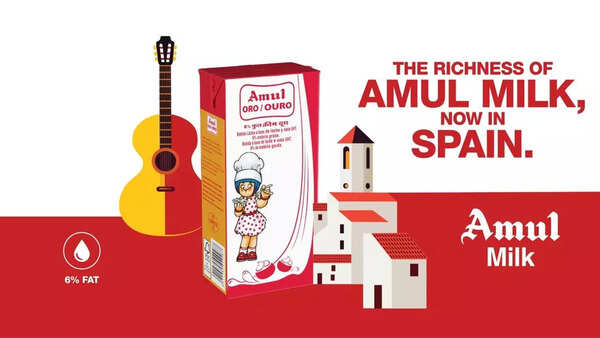‘Utterly, butterly, delicious’! Amul has been the go-to brand for milk-related products for years in India. But now, the Gujarat-based cooperative is expanding to Europe. The brand announced a strategic partnership with Spain’s Cooperativa Ganadera del Valle de los Pedroches (COVAP) to introduce its flagship milk product in Spain and the European Union.The rollout will begin in Madrid and Barcelona, followed by cities including Malaga, Valencia, Alicante, Seville, Cordoba and Lisbon in Portugal. From 1946 to 2025, Amul has had an exemplary journey of its own. Here’s how it became the global brand it is today.The seeds of Amul were sown in Anand, a small town in Gujarat. The exploitative trade practices followed by the local trade cartel led to a rebellious cooperative movement where the farmers approached Sardar Vallabhbhai Patel, seeking a solution. It was his advice that led to the formation of a co-operative as he suggested the farmers remove the middlemen, form their own co-operative and take the procurement, processing and marketing under their control.In 1946, the farmers went on a strike refusing to work under the cartel and under the inspiration of Sardar Patel, Morarji Desai and Tribhuvandas Patel formed a cooperative.Named Kaira District Co-operative Milk Producers Union Ltd., the company began with just two village dairy co-operative societies and 247 litres of milk. Tribhuvandas Patel became the founder Chairman along with Dr Verghese Kurien, who was tasked with running the dairy from 1950.In post-independence India where there was a dire need for Milk, Amul came as a needed relief. Kurien led the ‘Operation Flood’ launched by the National Dairy Development Board which aimed to make India dairy independent.The program created a national milk grid which linked producers throughout the country, eliminating middlemen, reducing regional prices and ensuring that farmers got the majority of the price share. Due to the success of the operation, Kurien was subsequently named ‘Father of the White Revolution’
Amul’s business model

Image credits: X/@DeshGujarat
The Amul Model of Dairy Development is a three-tiered structure where the dairy cooperative societies at the village level are federated under a milk union at the district level and a federation of member unions at the state level.Tier 1 has village dairy cooperative societies set up in various localities. Every milk producer is a part of this community that elects representatives that manage District Milk Unions.Tier 2 has the District Milk Unions that manage the processing of milk and associated products and sell these to the State Milk Federation. The federation then sells these products in the market.Tier 3 has all these organizations that come under Amul (Anand Milk Union Limited) and the cooperative directly sells products to customers through the milk federation. The revenue is shared in a similar manner.In FY’22, Amul saw a group turnover of INR 61,000 Crores and achieved 18% growth in the previous year, further cementing it as one of the largest FMCG brands in India.






